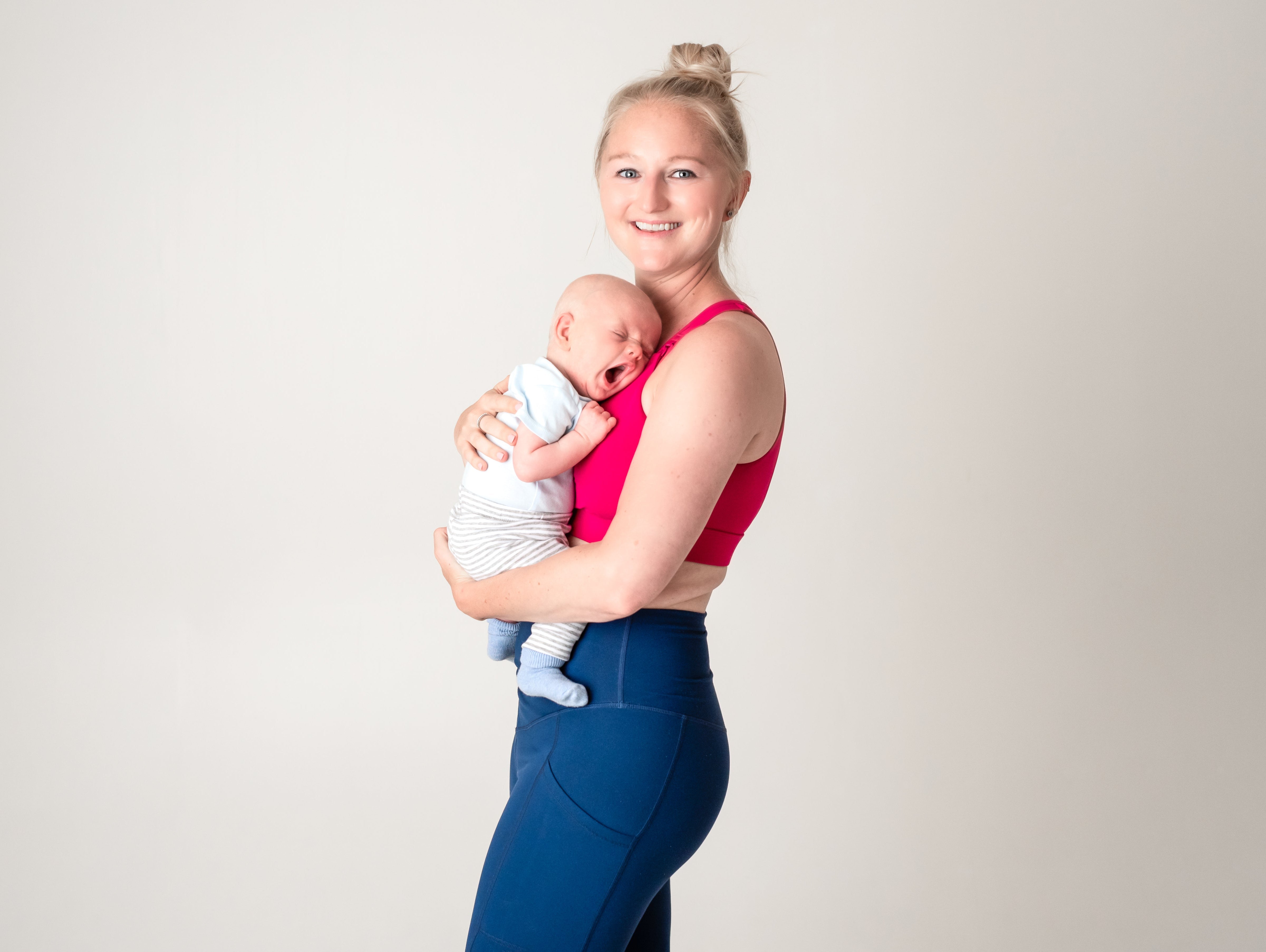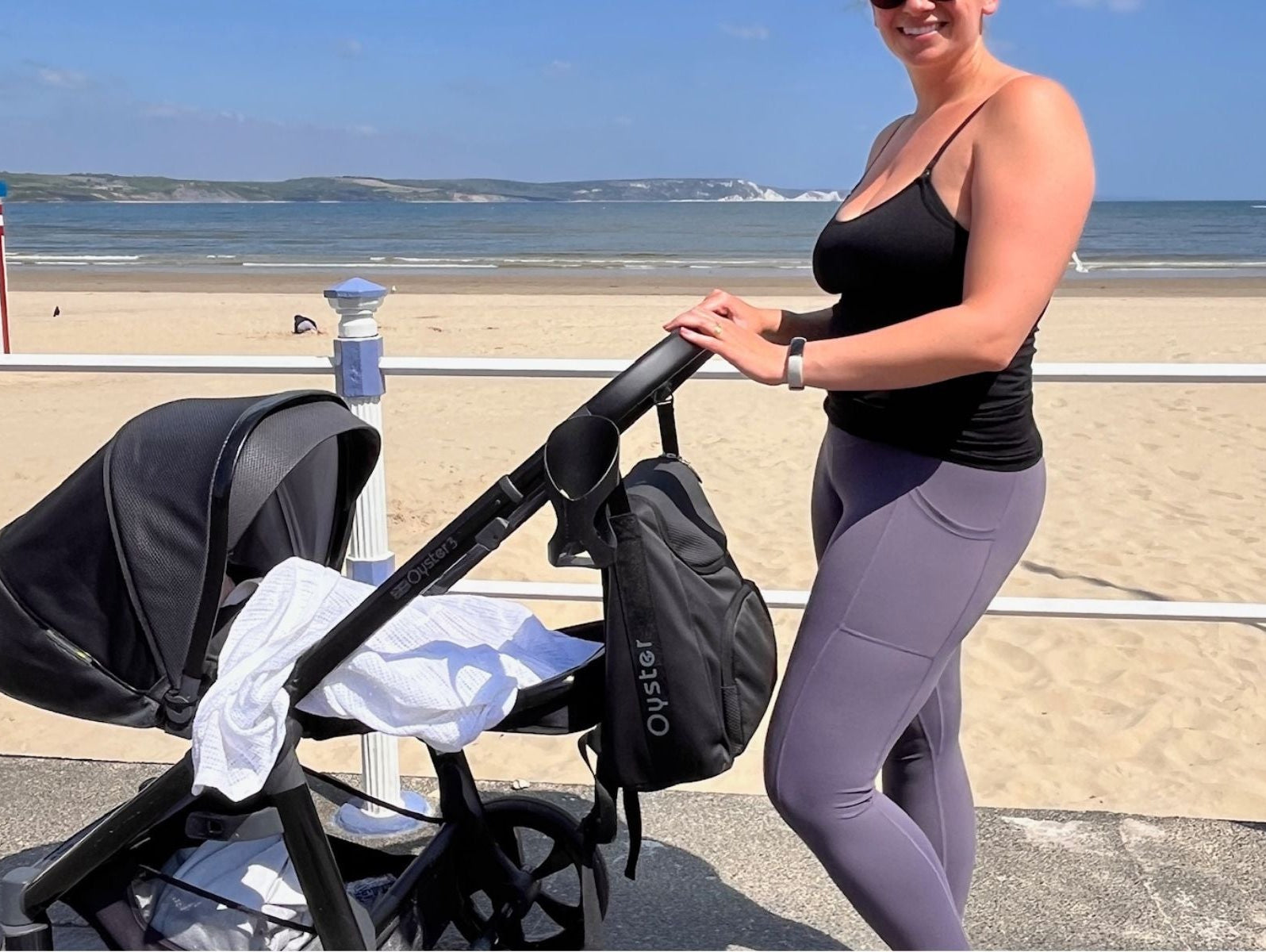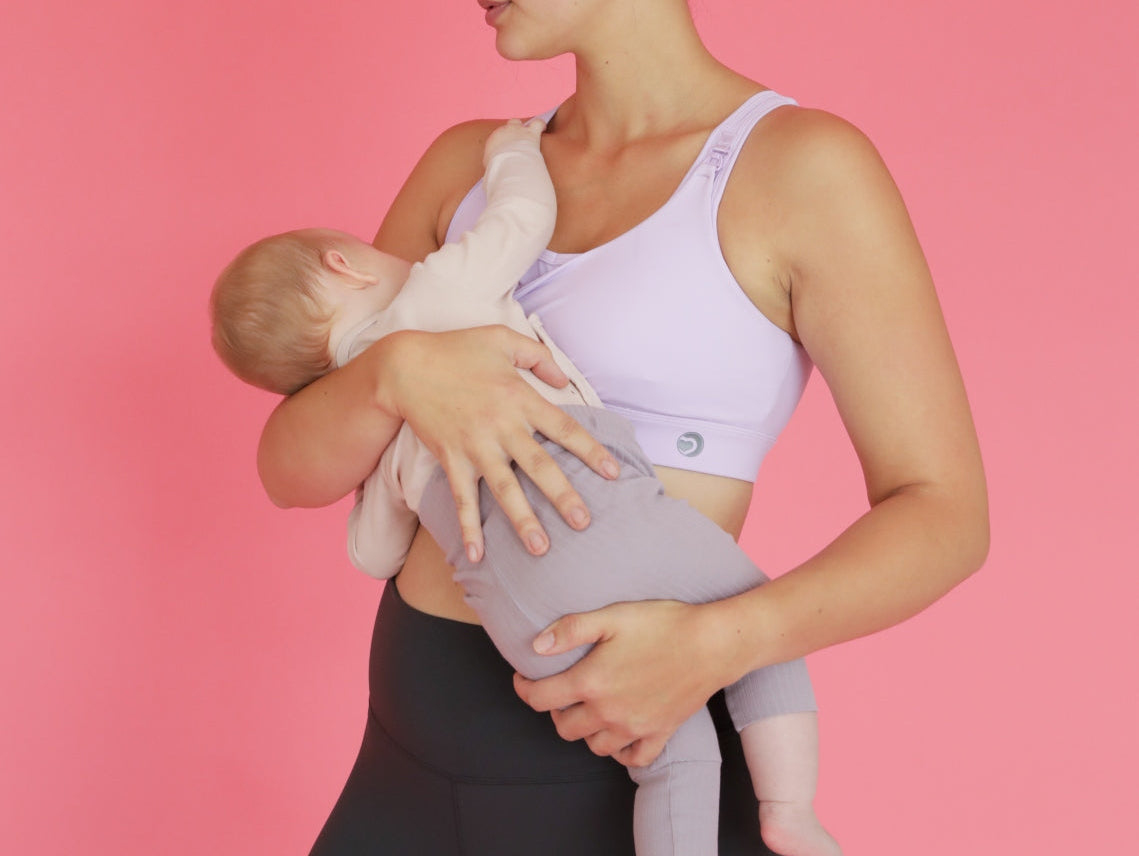Mum Claire Black shares her story of diastasis recti rehabilitation and how she is ready to restart the journey after her second baby.
Diastasis recti happens when the left and right abdominal muscles weaken and stretch to the side during pregnancy. Yet while it’s very common, many expectant or new mothers don’t even know what it is, let alone whether or not they have it.
Clare Black, from Edinburgh, says in the weeks leading up to the birth of her son, in April 2019, she was told by her midwife that her abdominal muscles had separated.
“Diastasis recti had never been mentioned to me before. I'd never heard of it or known of anybody with it,” she says.
Around one week after the birth, Black’s first-time-mum anxiety went into overdrive when a community midwife visited her at home. “She put her hand on
my tummy and it just kept sinking and sinking and sinking, and she said my separation was very bad – she could feel all the way down practically to my
bowel,” she says.

Her midwife told her to wear a tubigrip and ask her doctor to refer her to a physiotherapist at her six-week check up appointment. She then had to wait a long four months for the physio referral for diastasis recti rehabilitation, to come through.
While diastasis recti, or divarication (where the two muscles that run down the middle of your stomach separate during pregnancy), is relatively common, the amount of separation can vary.
The first symptoms
Black says she sort of knew something wasn't right because of the shape of her stomach. “I'd never had a baby before so I didn't really know what to expect. I kind of thought I would just go back to the way I was before I was pregnant – I'm quite petite and slim so I just assumed it was part and parcel of pregnancy and birth,” she says.
“When I was standing, I looked very much still pregnant – probably about six months pregnant. I actually had strangers approach me – when my son was in the pram and only four weeks old – asking me when the next one was due,” she adds.
The impact on confidence
Black admits the condition massively affected her self-confidence.
“I didn't know anybody who was in the same position as me – all my new mum friends looked like they were getting back to their normal shape. They didn't still look pregnant, and didn't have anywhere near the kind of visual body changes that I had. So it was difficult because I felt like no one understood. I was very self conscious – I still had to wear maternity clothes, and it was difficult to meet up with other mums when I felt so insecure about how I looked,” she says.
It was four long months post-birth before Black was finally referred to a physio. “The physio told me I had the worst diastasis recti that she’d ever seen,” she says.
What causes it?
Women may be more likely to develop diastasis recti if they are petite, carry multiple babies at a time, have a breech birth, pelvic instability or poor muscle tone.
“I hadn't realised how common it was – and since my physio told me it could be down to genetics, it wasn’t something I could have really prevented,” she continues.
"I actually had strangers approach me – when my son was in the pram and only four weeks old – asking me when the next one was due,”
Starting rehab
“When I started rehab, my NHS physio gave me some exercises which she felt would work to try and bring the gap closer together, progress was slow but steady. The numbers were reducing every couple of weeks (in the circumference of my stomach), but then I kind of plateaued. I hit a wall and made no progress whatsoever.
“Then some specialist pelvic health physios – Gráinne Donnelly and Antony Lo – agreed to work with me and my NHS Physio, Lyndsey Whitson, to see what progress I could make if I wasn’t treated conservatively. I couldn’t believe my luck.”
Donnelly and Lo gave Black extensive rehab in order to help her regain some of the functional everyday movements she’d since lost. “The progress that I made from starting to work with Gráinne and Antony, the improvement aesthetically, was unbelievable. I pretty much halved my gap, just from the exercises.”
Getting pregnant again
Now, after the birth of her second child, she wants to raise awareness of Diastasis recti – so “women don’t have to feel ashamed”.
“After everything that had happened it seemed like maybe it wouldn't be possible to have another child,” she says. “But I knew I hadn't finished having children – I'd always wanted two, and ideally I would have liked two years between them. So I kind of had that in my head.
“I was still quite anxious about getting pregnant again – I wasn’t sure if I'd be able to feel movement normally because the gap was already there"
“When it came to my second pregnancy, I was able to continue working with all three of my physios and, and it can be almost better the second time around because you're aware of it. So you can do things to control it, you can remain active and try to keep your muscles strong, so that you're preparing yourself for the recovery period.

“I was still quite anxious about getting pregnant again – and there were things that made it quite difficult in pregnancy too, such as, I wasn’t sure if I'd be able to feel movement normally because the gap was already there. And then, once I started feeling movement my midwife just really struggled to examine me properly to know the baby's position – so she would mark me as ‘breech’ every week for my antenatal appointments, and then I had to be sent for a review, because at 37 weeks she still considered me as breech. The reality was, she just wasn't sure what position the baby was in because of the way that my tummy was.”
What comes next...
It’s clear that having the condition has been both a physically and mentally taxing challenge for Black. She now faces months of further diastasis recti rehabilitation to try and strengthen her muscles back to where they were before she fell pregnant with her second baby. And at some point in the future may consider surgery to help heal what she can't do herself.
Her best piece of advice? Go and see a pelvic health physio if you have any concerns, it's not something to fear or be embarrassed about.
The physiotherapists that worked with Claire on her rehabilitation can be found on Instagram and are Grainne Donnelly (@absolute.physio), Antony Lo ( @physiodetective) and Lyndsey Whitson ( @lyndseydoctor)



